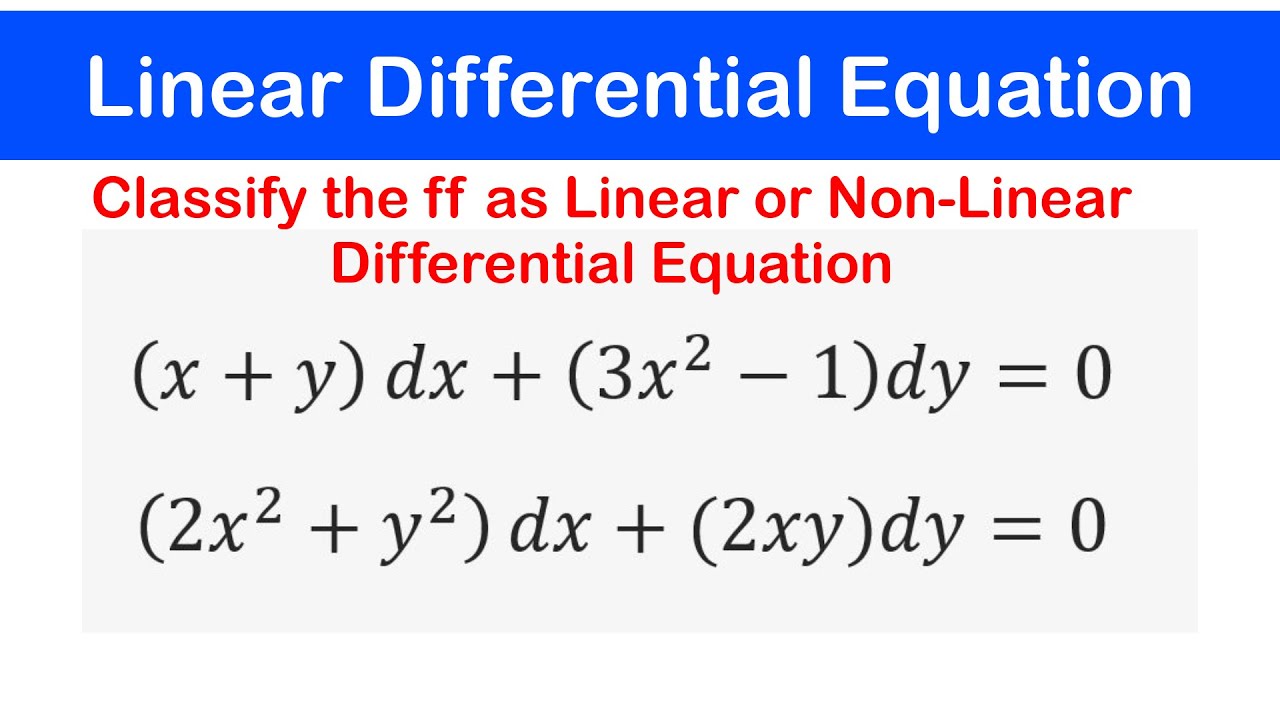Video 3.1. Sistemas de ecuaciones lineales, definición y clasificación
Summary
TLDRThis video introduces the topic of linear systems of equations in algebra, defining what they are and how they differ from non-linear equations due to the absence of squared or higher degree terms. The script explains the concept of a solution to a system, using an example with two equations and two unknowns, and demonstrates how to find a common solution. It also discusses the classification of systems into compatible (with one or multiple solutions) and incompatible (with no solutions), based on the proportionality of coefficients and constants. The video promises to explore methods for solving these systems in future content.
Takeaways
- 📚 The video introduces the topic of 'Systems of Linear Equations' in algebra.
- 🔍 A system of linear equations, also known as a linear system, is a set of linear equations over a commutative ring or field.
- 📈 The term 'linear' is used because the variables in the equations do not have exponents greater than one, indicating a straight line relationship.
- 🤝 Two equations with two unknowns form a system when the goal is to find a common solution for both equations.
- 🔑 The solution of a system is a pair of numbers that satisfies both equations simultaneously.
- 🔄 Systems of linear equations can be classified into compatible or incompatible based on the number of solutions they have.
- 💡 A compatible system can be either determined (one unique solution) or indeterminate (multiple solutions).
- 🚫 An incompatible system is one that has no solution at all.
- 📝 For a system to have a unique solution, the coefficients of the variables in the equations must not be proportional.
- 🔄 Infinite solutions occur when the coefficients of the variables and the independent terms of one equation are proportional to those of another.
- ❌ No solution exists when the coefficients of the variables are proportional, but the independent terms are not.
- 📈 Graphical methods, as well as other methods to be discussed in future videos, can be used to determine if a system is compatible or incompatible and the type of compatible system.
Q & A
What is a system of linear equations?
-A system of linear equations, also known as a linear system, is a set of equations that are linear, meaning the variables do not have exponents greater than one. They are defined over a commutative ring or field.
Why are they called 'linear' equations?
-They are called 'linear' because the variables in the equations do not have exponents higher than one, and there are no squared, cubed, or higher power terms.
What is the solution of a system of linear equations?
-The solution of a system of linear equations is a set of values for the variables that satisfy all the equations in the system simultaneously.
What is the relationship between the equations in a system that has a unique solution?
-In a system with a unique solution, the equations are not proportional to each other, meaning the coefficients of the variables are not the same when compared across the equations.
How can you determine if a system of linear equations has multiple solutions?
-A system has multiple solutions if the coefficients of the variables in the equations are proportional to each other, and the constant terms are also proportional.
What is an incompatible system of linear equations?
-An incompatible system of linear equations is one where the equations do not have any solution because the coefficients of the variables are proportional, but the constant terms are not.
What are the different types of systems of linear equations based on the number of solutions they have?
-Systems of linear equations can be classified as compatible or incompatible. Compatible systems can be determined (one unique solution) or indeterminate (multiple solutions), while incompatible systems have no solutions.
What is the graphical method for solving a system of linear equations?
-The graphical method is a visual approach to determine if a system of linear equations has a solution by plotting the equations on a graph and observing their intersection points.
Outlines

This section is available to paid users only. Please upgrade to access this part.
Upgrade NowMindmap

This section is available to paid users only. Please upgrade to access this part.
Upgrade NowKeywords

This section is available to paid users only. Please upgrade to access this part.
Upgrade NowHighlights

This section is available to paid users only. Please upgrade to access this part.
Upgrade NowTranscripts

This section is available to paid users only. Please upgrade to access this part.
Upgrade NowBrowse More Related Video

Aljabar Linier Pertemuan 2_Sistem Persamaan Linier part 1/4

🔵03 - Linear and Non-Linear Differential Equations: Solved Examples

A concept of Differential Equation

Common Core Algebra II.Unit 3.Lesson 7.Systems of Linear Equations

SPLTV Kelas 10 Kurikulum Merdeka

What Linear Algebra Is — Topic 1 of Machine Learning Foundations
5.0 / 5 (0 votes)